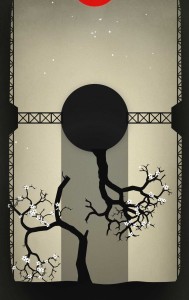

By now, you’ve probably heard of Prune, the artful and meditative puzzler by Joel McDonald that is a masterpiece of minimalist narrative. You might even have had the fortune to play it, drawn in at first by the art style and simple mechanics, only to play for longer and longer as you worked out the bits and pieces of a story told entirely without words, and became invested in it.
If you haven’t, you’re probably wondering what I’m talking about, or even why I’m writing about a mobile game that wasn’t positioned as a serious or therapeutic game, and which lacks the systems of scarcity and conflict that one might leverage for educational purposes.
Simply put, it’s because I find that Prune does have a message: one that it allows you to discover through playing at your own pace. More to the point, its a message conveyed entirely without words, with the only words in the entirety of the game being the title (and the credits once you finish the game), but which is all the more poignant for it.

All too often, serious games aren’t much fun to play. Though the genre exists because academics, educators, health professionals and others saw the potential of games for purposes beyond simple entertainment, what’s made often doesn’t end up being a good game. Many aren’t fun, accessible, or at all engaging, with far too much jargon (and text in general) thrown into the mix, designed to hamfistedly hammer home a point to a student or patient.
And while I understand that those who develop them often mean well in wishing to make sure those who play learn what they are intended to, I’m not sure that’s what games are good for.
Games can be powerful for allowing one to experience the world from someone else’s point of view – Beyond Eyes comes to mind as an example of that. They can be powerful tools to test our models of how people will behave in situations that are hard to replicate in reality – here World of Warcraft‘s Corrupted Blood Incident comes to mind. And they can be powerful in helping one understand the past and the world around them in terms of systems, learning how even the smallest actions (or lack of action) can shape the world around them, as anyone who has played a game like Starcraft or Age of Empires knows all too well.
Game design isn’t – and shouldn’t be – about finding ways to present players with walls of text in tired, old ways. At its heart, its about building a world and helping players find their place in – and their way through – the world. It’s about telling a story, and letting players make that story their own. It’s about crafting experiences that touch the soul, whether through focused engagement and action, reflective meditation, or simply taking a Journey through another place and time.
Everything else, everything that doesn’t build towards what one wants a game to be, may need to be pruned away so the central idea – what is vital – can not just endure, but thrive.